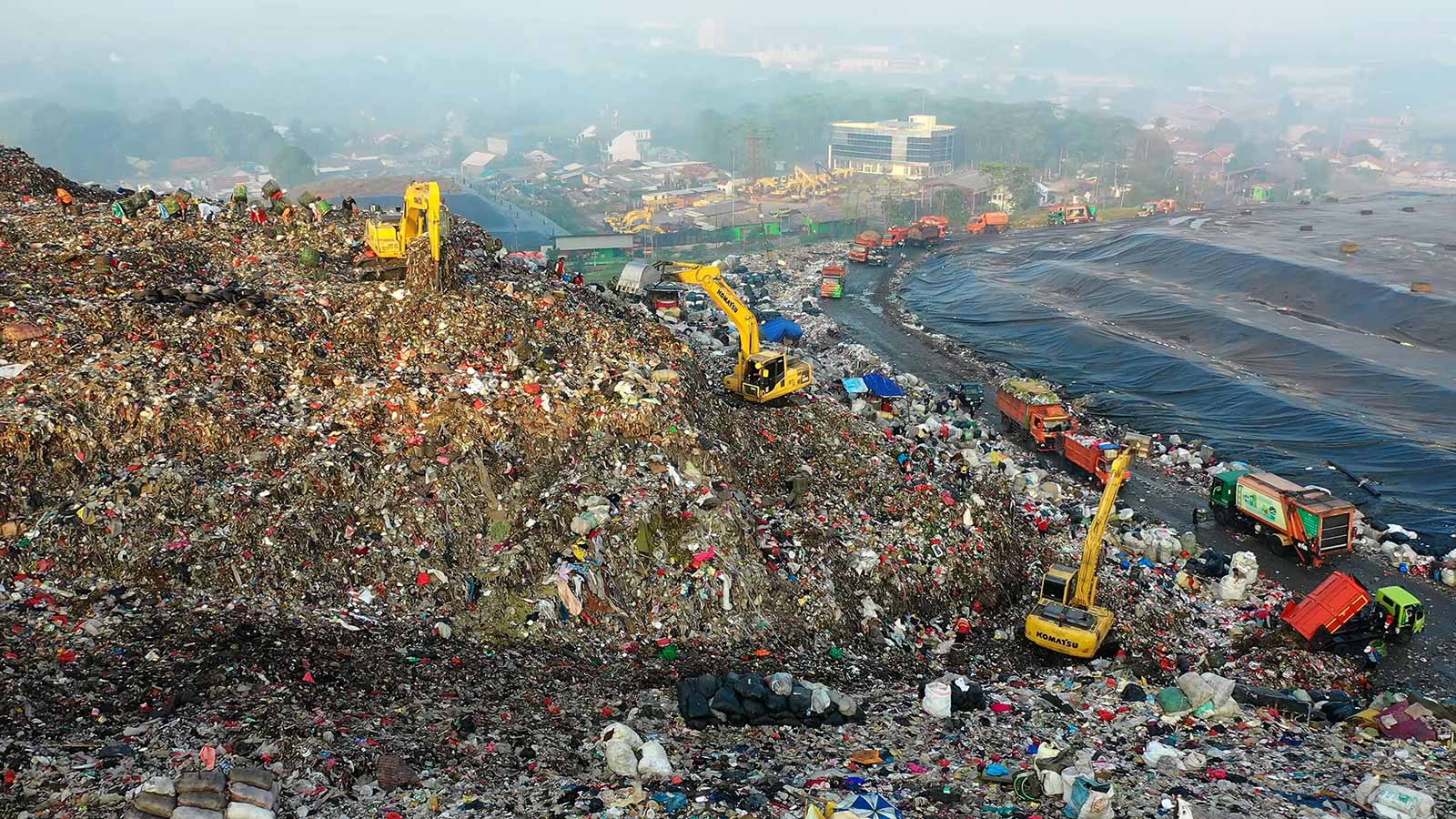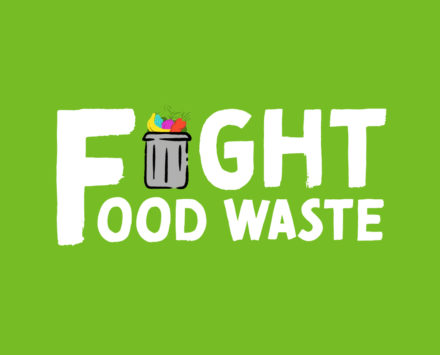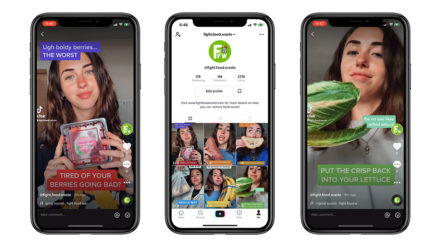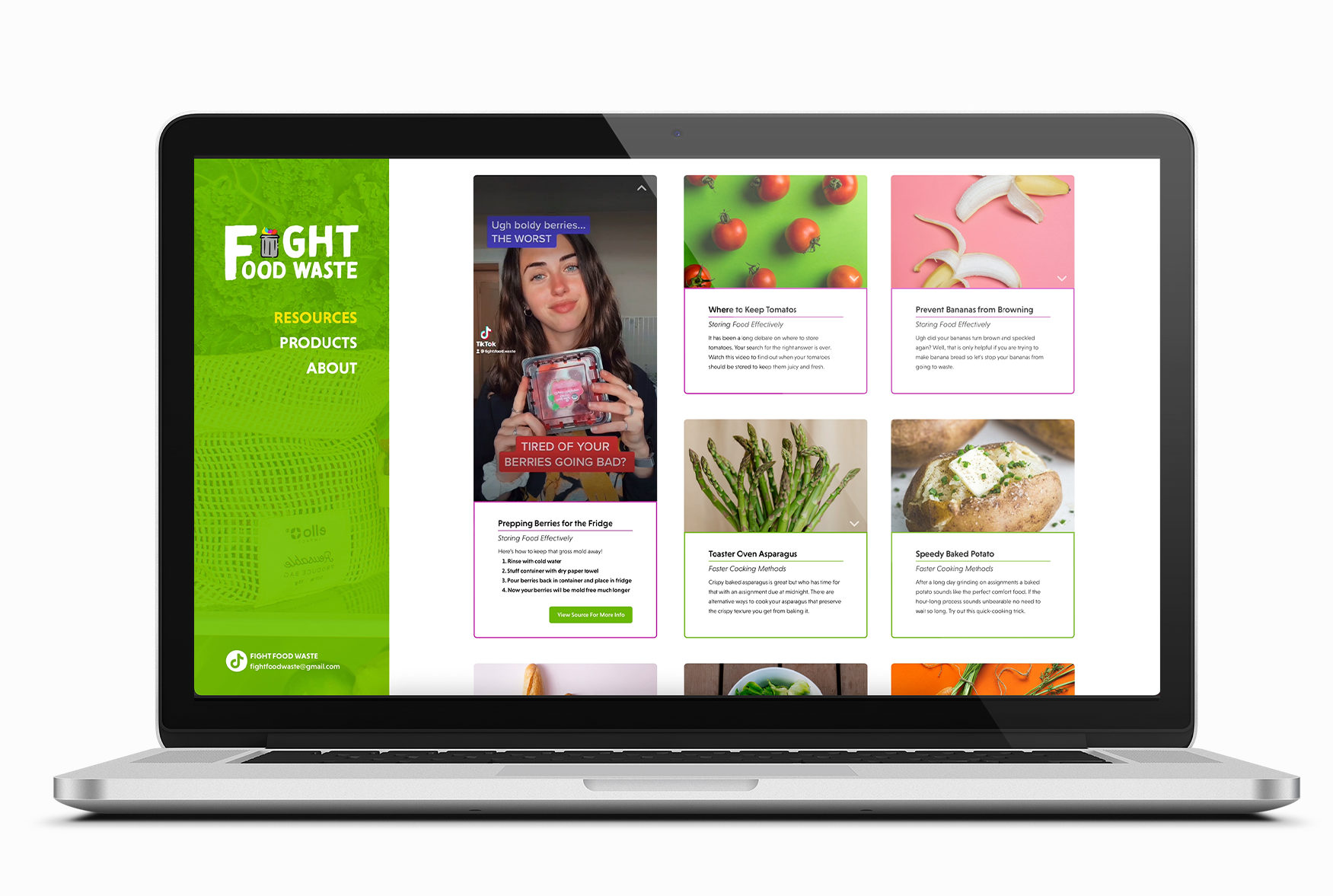
Thesis Project by Erin Hart
The Problem
An issue many off-campus college students at Miami University run into is the perishable foods they buy commonly go bad before they have a chance to use or eat it. The main reason for this food waste problem is that students purchase perishable ingredients expecting to have the opportunity to use them during the week. Due to their busy schedules, the food they purchased frequently spoils by the time they are able to prepare it and must be thrown away.
What strategies can help college students at Miami University who live off-campus who don’t know very much about cooking, buying, or storing food effectively limit their food waste?
Target Audience
College students that live off-campus at Miami University who already buy, eat and cook perishable food, but they commonly run out of time to eat those perishable ingredients before they go bad.
Research
Secondary Research
First, I began collecting secondary resources such as journal articles and case studies in hopes to learn about researched food waste patterns of my target audience. Here are some key insights from my secondary research.
- “data has shown 18-to 24-year-old adults are commonly one of the groups producing the most food waste”. This makes Miami University students great candidates for my fight to reduce food waste because they are one of the largest groups of contributors to the problem.
- In trying to determine why food waste is so common for 18 to 24-year-olds I discovered this fact stating that “Poor meal planning, lack of knowledge of how to store leftovers, and lack of fridge space for storing food all exacerbate this problem.”
- Research has found that “students living off-campus were more likely to express personal awareness of the financial consequences of wasting food”. This makes me confident that college students will utilize any solution I produce because they are aware of the effects food waste is having on their bank accounts.
Primary Research
Interviews
The information collected from my secondary research helped me direct my primary research methods. I started by interviewing a variety of students who live off-campus at Miami University and discovered few patterns that came from asking them about their food buying, cooking, and storage habits.
- The participants who enjoy cooking but aren’t avid cookers are wasting the most food. Those who love to cook aren’t wasting food because they cook so often and those who don’t like cooking aren’t buying very much perishable foods. Instead, they are eating out for most of their meals.
- When speaking to my interviewees, they all go grocery shop once at the beginning of the week. This is important to note because that means they are buying perishable foods they hope to last them until the following Sunday.
- The most important piece of data from my interviews was their responses to which of the three categories from my research question cooking, buying, or storing food effectively did they feel need the most improvement to reduce their food waste. They all answered storing food more effectively would be the most helpful category to focus on.
Survey
With my interview insights in mind, I began curating a survey to get a wide range of responses from the Miami University student body. This data was very insightful towards directing my design outcome for this project:
- 66% of participants’ perishable food goes bad sometimes or often. This indicates that a majority of the time students have to throw away the perishable foods they buy.
- When asked why they think their perishable foods are going bad, the number one response was that they get busy during the week and run out of time to use it.
- Of all the different types of perishable foods, fruits and vegetables are spoiling much more than the other types of food. My solution must tailor towards these specific food categories.
- Knowing my interviewees decided improving food storage was the most important change I ended the survey by asking “How familiar participants are with the recommended ways to store perishable foods so they last the longest?”.Outstandingly, 82% were not familiar or felt they needed to learn more about proper storage methods.
Primary Insights
My research identified the primary causes of food waste for the off-campus students at Miami University as a lack of time and a lack of knowledge. With a lack of time, students aren’t able to cook as often as they would hope. This leads to their perishable foods such as fruits and vegetables to spoil before they have a chance to eat them. To educate them on how to combat this problem, I had to design a resource that would not require a lot of time and effort to use that can educate them on how to make sure their groceries don’t end up in the trash.
Design Process + Testing
Fight Food Waste

I determined the most effective resource is an educational and engaging social media account connected to a website database. The platform is called Fight Food Waste.
Brand Guidelines
- Vibrant colors, crisp food images, and playful design elements
- Humorous spoken and written language using funny verbiage with bubbly energy.
- Achieve relatability because as the creator I am a college student looking to reduce my food waste!
Platform Content
- Storing Food Effectively to solve Miami University students’ main food waste issue.
- Faster Cooking Methods to help them prepare their properly stored food quicker with their busy academic schedules.
- Lastly, teaching them how to revive food that seems to have “gone bad” but actually can be saved and eaten.
TikTok Account
The perfect social media platform to utilize is Tiktok because it is already commonly used for cooking and nutrition tips and tricks.

Supplementary Website
In the bio of the TikTok account is a link to a supplementary Fight Food Waste website. The resource page contains a variety of image widgets introducing the food waste topics covered on the TikTok account. When users click on a widget it expands, plays the related TikTok video, and an instructional description.

User Testing
For constructive feedback, I conducted user testing and these were the main comments:
- Include a call to action that instructs users on the website to scroll down past the introduction paragraph.
- Add a button on the image widgets so people know it can be clicked to view the full TikTok video.
- Participants enjoyed the vibrant brand style but would love to see a more designed out logo that would work well as the TikTok account profile image.
Those small features were added to the interface to improve the user experience and a new logo was created as seen on all the final design outcomes.
